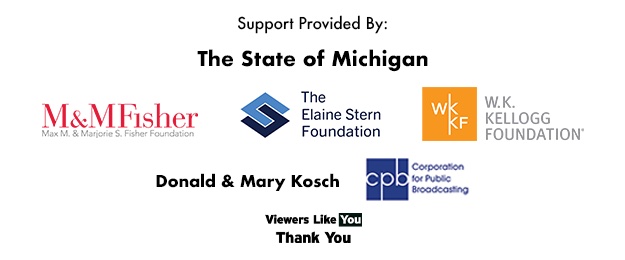Grades
Standard
Analyze the physical, emotional, and social dimensions of characters found in dramatic texts from various genre and media.
Compare and demonstrate various classical and contemporary acting techniques and methods.
Analyze a variety of dramatic texts from cultural and historical perspectives to determine production requirements.
Develop multiple interpretations and visual, aural, and multi-media production choices for scripts and production ideas and choose those that are [...]
Sing and play with expression and technical accuracy a large and varied repertoire of vocal and instrumental literature with a [...]
Perform an appropriate part in large and small ensembles, demonstrating well-developed ensemble skills.
Perform music using instruments (traditional and non-traditional) and electronic media.
Sight read accurately and expressively, music with a moderate level of difficulty.
Improvise rhythmic and melodic variations given pentatonic melodies, and melodies in major and minor keys.
Improvise original melodies over given chord progressions, each in a consistent style, meter, and tonality.
Compose music in several different styles, demonstrate creativity in using the elements of music for expressive effect.
Arrange pieces for voices or instruments, other than those for which the pieces were written, in ways that preserve or [...]
Compose and arrange music for voices and various acoustic and electronic instruments, demonstrating knowledge of the ranges and traditional usage [...]
Demonstrate extensive knowledge and use of the technical vocabulary of music.
Analyze aural examples of a varied repertoire of music, representing diverse genres and cultures, by describing the uses of elements [...]
Identify and explain compositional devices and techniques and their purposes, giving examples of other works that make similar uses of [...]
Make informed, critical evaluations of the quality and effectiveness of performances, compositions, arrangements, and improvisations applying specific criteria.
Evaluate a I. Performance, composition, arrangement, or improvisation by comparing it to similar or exemplary models.
Through brief dances, demonstrate understanding of structures or forms such as palindrome, theme and variation, rondo, round, as well as [...]
Choreograph a duet demonstrating an understanding of choreographic principles, processes, and structures.
Create a dance that effectively communicates a contemporary social theme.
Create a dance and revise it over time using multi-media equipment, such as slides, camera, video, and computers to articulate [...]
Reflect on and describe how movement choices communicate abstract ideas in dance.
Create a dance and revise it over time, articulating the reasons for artistic decisions, and what was lost and gained [...]
Establish a set of aesthetic criteria and apply it in evaluating their own work and that of others.
Formulate and answer their own aesthetic questions; e.g., what is it that makes a particular dance that dance? How much [...]
Explain how personal experience influences the interpretation of a dance.
Perform and describe similarities and differences between two contemporary theatrical forms of dance.
Perform or discuss the traditions and techniques of a classical dance form.
Demonstrate understanding of how personal experience influences the interpretation of a dance.
Effectively communicate how lifestyle choices; e.g., exercise, diet, habits, affect the dancer.
Create an inter-disciplinary project based on a theme identified by the student, including dance and two other disciplines, such as [...]
Clearly identify commonalities and differences between dance and other disciplines with regard to fundamental concepts, such as materials, elements, and [...]
Demonstrate and discuss how technology can be used to reinforce, enhance, or alter the dance idea in an inter-disciplinary project.
Demonstrate reflection upon personal progress and growth during one’s own study in each of the arts disciplines.
Critically observe, describe, and analyze visual characteristics within works of art.
Effectively interpret artwork, searching for embedded meaning, function, and personal connections.
Effectively describe how the artist’s choice of materials, techniques, media technology, and processes influence the viewer.
Effectively use critical thinking strategies to observe, compare, and contrast artworks.
Develop and defend informed aesthetic opinions about works of art using effective artistic vocabulary.
Grades
Standard
Analyze the physical, emotional, and social dimensions of characters found in dramatic texts from various genre and media.
Compare and demonstrate various classical and contemporary acting techniques and methods.
Analyze a variety of dramatic texts from cultural and historical perspectives to determine production requirements.
Develop multiple interpretations and visual, aural, and multi-media production choices for scripts and production ideas and choose those that are [...]
Sing and play with expression and technical accuracy a large and varied repertoire of vocal and instrumental literature with a [...]
Perform an appropriate part in large and small ensembles, demonstrating well-developed ensemble skills.
Perform music using instruments (traditional and non-traditional) and electronic media.
Sight read accurately and expressively, music with a moderate level of difficulty.
Improvise rhythmic and melodic variations given pentatonic melodies, and melodies in major and minor keys.
Improvise original melodies over given chord progressions, each in a consistent style, meter, and tonality.
Compose music in several different styles, demonstrate creativity in using the elements of music for expressive effect.
Arrange pieces for voices or instruments, other than those for which the pieces were written, in ways that preserve or [...]
Compose and arrange music for voices and various acoustic and electronic instruments, demonstrating knowledge of the ranges and traditional usage [...]
Demonstrate extensive knowledge and use of the technical vocabulary of music.
Analyze aural examples of a varied repertoire of music, representing diverse genres and cultures, by describing the uses of elements [...]
Identify and explain compositional devices and techniques and their purposes, giving examples of other works that make similar uses of [...]
Make informed, critical evaluations of the quality and effectiveness of performances, compositions, arrangements, and improvisations applying specific criteria.
Evaluate a I. Performance, composition, arrangement, or improvisation by comparing it to similar or exemplary models.
Through brief dances, demonstrate understanding of structures or forms such as palindrome, theme and variation, rondo, round, as well as [...]
Choreograph a duet demonstrating an understanding of choreographic principles, processes, and structures.
Create a dance that effectively communicates a contemporary social theme.
Create a dance and revise it over time using multi-media equipment, such as slides, camera, video, and computers to articulate [...]
Reflect on and describe how movement choices communicate abstract ideas in dance.
Create a dance and revise it over time, articulating the reasons for artistic decisions, and what was lost and gained [...]
Establish a set of aesthetic criteria and apply it in evaluating their own work and that of others.
Formulate and answer their own aesthetic questions; e.g., what is it that makes a particular dance that dance? How much [...]
Explain how personal experience influences the interpretation of a dance.
Perform and describe similarities and differences between two contemporary theatrical forms of dance.
Perform or discuss the traditions and techniques of a classical dance form.
Demonstrate understanding of how personal experience influences the interpretation of a dance.
Effectively communicate how lifestyle choices; e.g., exercise, diet, habits, affect the dancer.
Create an inter-disciplinary project based on a theme identified by the student, including dance and two other disciplines, such as [...]
Clearly identify commonalities and differences between dance and other disciplines with regard to fundamental concepts, such as materials, elements, and [...]
Demonstrate and discuss how technology can be used to reinforce, enhance, or alter the dance idea in an inter-disciplinary project.
Demonstrate reflection upon personal progress and growth during one’s own study in each of the arts disciplines.
Critically observe, describe, and analyze visual characteristics within works of art.
Effectively interpret artwork, searching for embedded meaning, function, and personal connections.
Effectively describe how the artist’s choice of materials, techniques, media technology, and processes influence the viewer.
Effectively use critical thinking strategies to observe, compare, and contrast artworks.
Develop and defend informed aesthetic opinions about works of art using effective artistic vocabulary.


